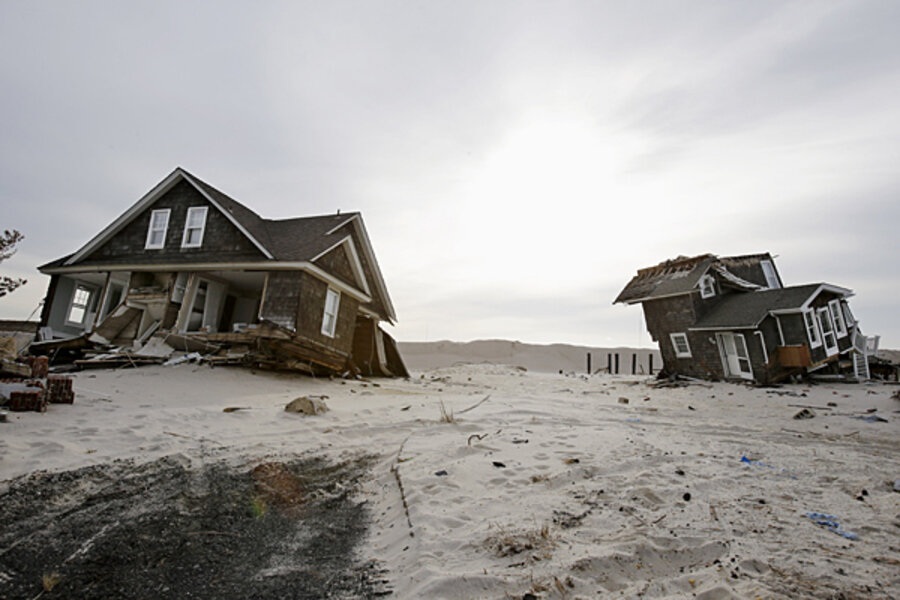How global warming may lessen chance of another superstorm Sandy
Loading...
| Washington
Man-made global warming may further lessen the likelihood of the freak atmospheric steering currents that last year shoved Superstorm Sandy due west into New Jersey, a new study says.
But don't celebrate a rare beneficial climate change prediction just yet. The study's authors said the once-in-700-years path was only one factor in the massive $50 billion killer storm. They said other variables such as sea level rise and stronger storms will worsen with global warming and outweigh changes in steering currents predicted by the study's computer models.
"Sandy was an extremely unusual storm in several respects and pretty freaky. And some of those things that make it more freaky may happen less in the future," said Columbia University atmospheric scientist Adam Sobel, co-author of a new study on Sandy. But Sobel quickly added, "There's nothing to get complacent about coming out of this research."
The study published Tuesday in the journal Proceedings of the National Academy of Sciences looks at the giant atmospheric steering currents, such as the jet stream. A spate of recent and controversial studies has highlighted unusual kinks and meanders in the jet stream, linking those to extreme weather and loss of sea ice in the Arctic. This new study looks only at the future and sees a lessening of some of that problematic jet stream swerving, clashing with the other studies in a scientific debate that continues.
Both camps agree on what happened with the weird steering that shoved Sandy, a late season hurricane that merged with a conventional storm into a massive hybrid, into New Jersey. The jet stream plunged in an odd way. A high pressure system off the coast of Canada and Greenland blocked the storm from moving east, as most do.
That high pressure block now happens once or twice a year in August, September and October. Computer models show the jet stream will move further north, so the "giant blob of high pressure" will be even less frequent next century, said study lead author Elizabeth Barnes of Colorado State University.
But Barnes and Sobel said because so many other factors are involved this doesn't mean fewer storms hitting the New York region. This is only one path; storms usually come from the south instead of from the east like Sandy.
Scientists agree that future storms will be slightly stronger because of global warming and that sea level is rising faster than researchers once thought, Sobel said. Those factors likely will overwhelm the predicted change in steering currents, he said.
Rutgers University climate scientist Jennifer Francis, one of the major proponents of the jet-stream-is-changing theory, said she doesn't see the jet stream becoming stronger and moving north as Barnes says the models predict. Her work and others points to more Sandy-like storms, especially because there seem to be more late-season tropical storms.
"The matter is not settled," said Pennsylvania State University climate scientist Michael Mann.







